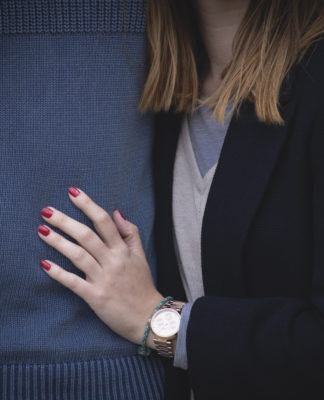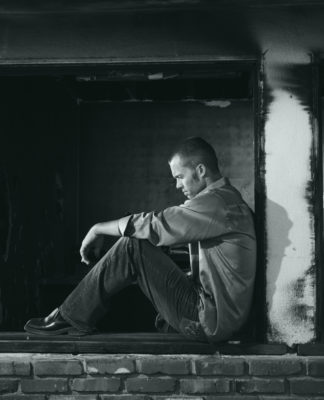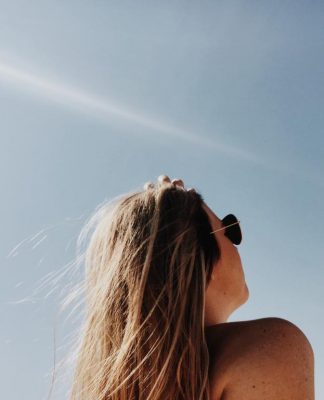When was the last time you felt self-assured and excited about a current project or
idea and were able to immerse yourself in the process with your full attention?
“Flow” is often defined as the mental state of being completely present and fully
absorbed in a task and it is a strong contributor to creativity.
The quality of attention of this state is similar to mindfulness—the intentional
focusing of awareness. This single-mindedness is a large component of flow
experiences and I believe that paired with somatic awareness, it could be a tool for
leading us into flow states and creative process with greater ease.
The state of flow is a harmony of going with the flow (flexibility) and intentional
action. Mihaly Csikszentmihalyi, author of “Flow: The Psychology of Optimal
Experience” states “The best moments in our lives are not the passive, receptive,
relaxing times… The best moments usually occur if a person’s body or mind is
stretched to its limits in a voluntary effort to accomplish something difficult and
worthwhile.”
People describe that in flow states they feel expanded or at one with the world and
have let go of individual worries. They are completely focused and very satisfied
with what they are doing. Athletic flow or “being in the zone” is a good example of
how the mind-body connection is probably also a large part of flow experiences. We
have all had times of “feeling on a roll” at work or in personal endeavors and this
again is a confluence of the mind, emotions and body working together in a way that
leads to feeling strong, alert, in effortless control, unselfconscious and at the peak of
our abilities.
Just as mindfulness “practice” is cumulative and intentional, Csikszentmihalyi notes
that the happiness related to flow states does not simply happen: “It must be
prepared for and cultivated by each person, by setting challenges that are neither
too demanding nor too simple for ones abilities.”
Here is what gets in the way of flow states: neuroticism (being highly focused on
feelings of guilt, envy, anger and anxiety), self-criticism and self-doubt. Julia
Cameron’s inspiring work The Artist’s Way focuses on rooting out these negative
beliefs about our creative process so that we can let our “divine” creativity flow.
Even if you have gone through this course, it is worth taking a look again if you find
you feel stuck or uninspired currently.
These negative cognitions about our abilities and our work can keep us stifled for
years. Though it is often difficult to look at them, acknowledging these barriers is
part of moving past them to more creative fulfillment.
Practice: Meditation in Motion
This can be practiced any time you are working on a project to become more
engaged and connected. The best outcomes with flow are activities that push us but
don’t feel impossible- meaning the right level of challenge. If it is too challenging, we
become anxious and if it isn’t difficult enough, we could become bored.
Next time you do the activity, become more present in your body by intentionally
connecting your awareness to your five senses.
Start by noticing colors and sounds in your environment as you are doing the
activity or connected to what you are working on. See how much attention you can
focus on sight by really noticing colors, patterns, shapes, etc. What sounds do you
hear inside the space or even beyond the space?
Connect to sense of touch by noticing temperature or the surface you are standing
or sitting on. Notice your feet touching the ground, maybe even press your toes into
the ground. Even if you are writing and not moving in this activity, sense the feeling
of the pen in your hand or the weight of the pen or the smoothness of the keys on
the keyboard.
Expand your awareness to other sensations in the body by noticing your feet again
and bringing your awareness “inside” your feet. Do you feel any tingling, pulsing,
warmth, cold or other sensations? Remember, the goal is to notice not judge.
Bring your awareness inside your hands and notice sensations there. Now see if you
can do a full body scan in this way- starting at the head, moving down the body to
the feet, even while still moving or working.
Practice focusing your attention on the five senses, as well as sensations in the body,
for as long as you can. If you forget or drift, bring your mind gently back to that
focus. Notice if paying attention this way increases your sense of ease in the activity.
Being fully present this way generally leads to feeling more calm and safe in our
own skin as our attention drops away from thoughts of worry or doubt. As we shift
attention from uncertainty, space opens up for creative thinking and a sense of
knowing what we are doing might arise.
To clear self doubt and focus on increasing creative flow, check out my guided
imagery audio “Creative Fire: Energize and Renew Your Creative Passion and
Confidence” available at my website or on InsightTimer.com.

 Renee Podunovich is a licensed Clinical Mental Health Counselor offering psychotherapy in Salt Lake City, UT and beyond via online services. Renee earned a BA in Sociology and Human Services and a MA in Counseling. She has worked in human services for over 25 years and has been in private practice for 10 years. Renee is interested in health and holistic wellness, dance and movement, sustainable living and innovative designs and solutions. She is a freelance writer and has published two books of poetry: "Let the Scaffolding Collapse" (Finishing Line Press, 2012) and "If There is A Center" (Art Juice Press, 2008). Her writing workshops (in person and online) are designed to use creative writing as a tool for centering, reflecting and for personal growth. Renee offers caring, compassionate support and focused guidance to help people come into balance with their own inner wisdom and self-healing abilities and to make meaningful and lasting changes in their lives. She believes optimal wellness comes from feeling connected to our essential nature within and to the larger world around us. Renee's specialty is in mind-body therapies including EMDR therapy, mindfulness practices and meditation techniques that build awareness and compassion. Whether you are in a period of difficult transition or wanting to deepen your connection to your creative process and build positive resources, Renee provides a safe environment where your wisdom and needs are put first. Get ready to engage at the next level in your professional, creative or personal life!
Renee Podunovich is a licensed Clinical Mental Health Counselor offering psychotherapy in Salt Lake City, UT and beyond via online services. Renee earned a BA in Sociology and Human Services and a MA in Counseling. She has worked in human services for over 25 years and has been in private practice for 10 years. Renee is interested in health and holistic wellness, dance and movement, sustainable living and innovative designs and solutions. She is a freelance writer and has published two books of poetry: "Let the Scaffolding Collapse" (Finishing Line Press, 2012) and "If There is A Center" (Art Juice Press, 2008). Her writing workshops (in person and online) are designed to use creative writing as a tool for centering, reflecting and for personal growth. Renee offers caring, compassionate support and focused guidance to help people come into balance with their own inner wisdom and self-healing abilities and to make meaningful and lasting changes in their lives. She believes optimal wellness comes from feeling connected to our essential nature within and to the larger world around us. Renee's specialty is in mind-body therapies including EMDR therapy, mindfulness practices and meditation techniques that build awareness and compassion. Whether you are in a period of difficult transition or wanting to deepen your connection to your creative process and build positive resources, Renee provides a safe environment where your wisdom and needs are put first. Get ready to engage at the next level in your professional, creative or personal life!

















